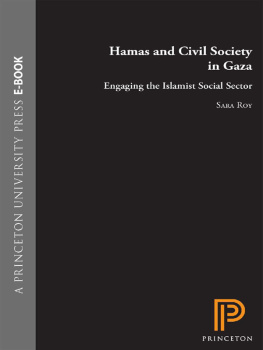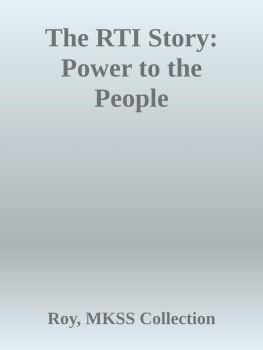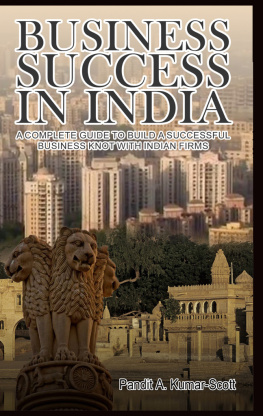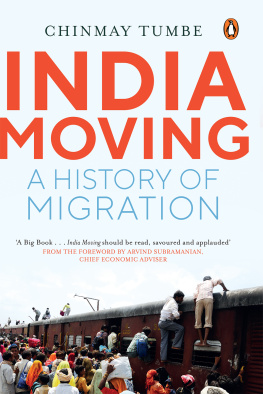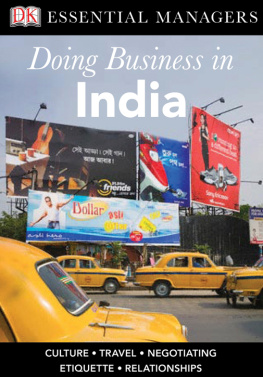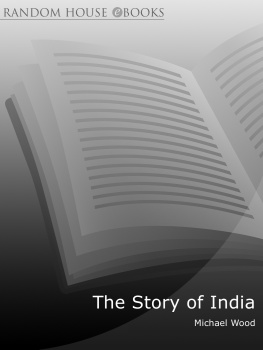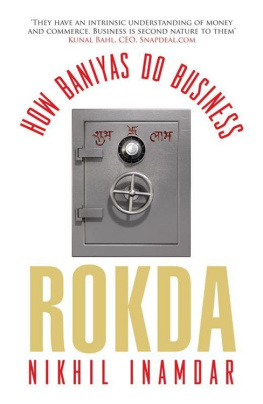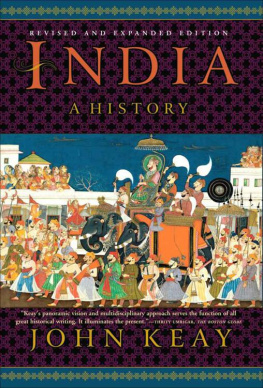Roy - A Business History of India
Here you can read online Roy - A Business History of India full text of the book (entire story) in english for free. Download pdf and epub, get meaning, cover and reviews about this ebook. year: 2018, publisher: Cambridge University Press, genre: Politics. Description of the work, (preface) as well as reviews are available. Best literature library LitArk.com created for fans of good reading and offers a wide selection of genres:
Romance novel
Science fiction
Adventure
Detective
Science
History
Home and family
Prose
Art
Politics
Computer
Non-fiction
Religion
Business
Children
Humor
Choose a favorite category and find really read worthwhile books. Enjoy immersion in the world of imagination, feel the emotions of the characters or learn something new for yourself, make an fascinating discovery.
- Book:A Business History of India
- Author:
- Publisher:Cambridge University Press
- Genre:
- Year:2018
- Rating:3 / 5
- Favourites:Add to favourites
- Your mark:
- 60
- 1
- 2
- 3
- 4
- 5
A Business History of India: summary, description and annotation
We offer to read an annotation, description, summary or preface (depends on what the author of the book "A Business History of India" wrote himself). If you haven't found the necessary information about the book — write in the comments, we will try to find it.
Roy: author's other books
Who wrote A Business History of India? Find out the surname, the name of the author of the book and a list of all author's works by series.
A Business History of India — read online for free the complete book (whole text) full work
Below is the text of the book, divided by pages. System saving the place of the last page read, allows you to conveniently read the book "A Business History of India" online for free, without having to search again every time where you left off. Put a bookmark, and you can go to the page where you finished reading at any time.
Font size:
Interval:
Bookmark:
A Business History of India
In recent decades, private investment has led an economic resurgence in India. But this is not the first time the region has witnessed impressive business growth. There have been many similar stories over the past 300 years. Indias economic history shows that capital was relatively expensive. How, then, did capitalism flourish in the region? How did companies and entrepreneurs deal with the shortage of key resources? Has there been a common pattern in responses to these issues over the centuries? Through detailed case studies of firms, entrepreneurs, and business commodities, Tirthankar Roy answers these questions. Roy bridges the approaches of business and economic history, illustrating the development of a distinctive regional capitalism. On each occasion of growth, connections with the global economy helped firms and entrepreneurs better manage risks. Making these deep connections between Indias economic past and present shows why history matters in its remaking of capitalism today.
Tirthankar Roy is Professor of Economic History at the London School of Economics and Political Science. He has published widely on South Asian history, global history, empires, and environmental history. His recent publications include The Economy of South Asia: From 1950 to the Present (2017) and India in the World Economy from Antiquity to the Present (2012).
A Business History of India
Enterprise and the Emergence of Capitalism from 1700
Tirthankar Roy
London School of Economics and Political Science


University Printing House, Cambridge CB2 8BS, United Kingdom
One Liberty Plaza, 20th Floor, New York, NY 10006, USA
477 Williamstown Road, Port Melbourne, VIC 3207, Australia
314321, 3rd Floor, Plot 3, Splendor Forum, Jasola District Centre, New Delhi 110025, India
79 Anson Road, #0604/06, Singapore 079906
Cambridge University Press is part of the University of Cambridge.
It furthers the Universitys mission by disseminating knowledge in the pursuit of education, learning, and research at the highest international levels of excellence.
www.cambridge.org
Information on this title: www.cambridge.org/9781107186927
DOI: 10.1017/9781316906903
Tirthankar Roy 2018
This publication is in copyright. Subject to statutory exception and to the provisions of relevant collective licensing agreements, no reproduction of any part may take place without the written permission of Cambridge University Press.
First published 2018
Printed in the United Kingdom by TJ International Ltd. Padstow Cornwall
A catalogue record for this publication is available from the British Library .
Library of Congress Cataloging-in-Publication Data
Names: Roy, Tirthankar, author.
Title: A business history of India : enterprise and the emergence of capitalism from 1700 / Tirthankar Roy, London School of Economics and Political Science.
Description: 1 Edition. | New York : Cambridge University Press, 2018. | Includes bibliographical references and index.
Identifiers: LCCN 2017057287 | ISBN 9781107186927 (hardback) | ISBN 9781316637487 (paperback)
Subjects: LCSH: IndiaEconomic conditions. | IndiaSocial conditions. | BusinessIndiaHistory. | Economic history.
Classification: LCC HC433 .R698 2018 | DDC 330.954dc23 LC record available at https://lccn.loc.gov/2017057287
ISBN 978-1-107-18692-7 Hardback
ISBN 978-1-316-63748-7 Paperback
Cambridge University Press has no responsibility for the persistence or accuracy of URLs for external or third-party internet websites referred to in this publication and does not guarantee that any content on such websites is, or will remain, accurate or appropriate.
For
Asim Kumar Nanda
When I started a career in economic history in the 1990s, interest in history was growing in the top economics schools of the world. The availability of cross-country historical income data, popularity of institutionalism, and new developments in the theory of growth rekindled interest in an old and half-forgotten question: Why do some countries grow rich and others remain poor? In the 2000s, historians criticised institutionalism. The exchange that followed became known as the divergence debate. In the last 20 years, the divergence debate formed the stem of the economic history field.
I joined this discussion from a base in Indian history, and with a vague feeling that the divergence debate did not serve India well. Over the years, that feeling developed into an argument. The argument has two parts. First, the theoretical models used to explain how the world became more unequal from the nineteenth century, failed to explain the recent emergence of India and China. Models that predicted divergence could not predict convergence in an easy way, and therefore, they were unreliable as theories about the past. Second, the debate encouraged the student of world history to ask the wrong question, that is, why India fell behind Europe and stayed poor. Capitalists in the region where the volume of trade grew hundredfold, and the fourth largest cotton mill industry of the world emerged in 18501950 did not either fall behind or stay poor. By starting with the falling-behind question, divergence historians missed the central paradox of Indian economic history: the coexistence of robust capitalism and stagnant agriculture.
This book turns the narrative around. It is not about falling behind, nor about what went wrong with India. It is about capitalism, and what went right. As business history, it does what business historians do the world over, which is to study how firms, entrepreneurs, communities, and organisations adapt to the environment, or what happens to corporate governance when companies are run by families and small groups like the managing agents of the past. As economic history, it foregrounds what I believe is the biggest puzzle about India, indeed about emerging economies in general how does capitalism grow in a region where capital is an expensive resource? The book is an attempt to answer this question.
The idea of the book emerged from my association with business historians of the Harvard Business School, especially Geoffrey Jones and Walter Friedman, who brought me in contact with other overview projects under way or recently finished. Franco Amatori and Andrea Colli contributed to the making of the book in a similar way. In gathering raw material, Prerna Agarwal, Bhanu Phani Krishna, and Harsha Tiwary provided invaluable help. On various occasions, I have discussed the subject or matters related to it with Michael Aldous, Hemant Bangur, Raj Brown, Rudra Chatterjee, Bishnupriya Gupta, Sunil Khilnani, Abhijit Pathak, Gita Piramal, Anand V. Swamy, Stefan Tetzlaff, Chinmay Tumbe, and Rusheed Wadia. I am grateful to all of them for the conversations. A detailed and helpful report from a Reader for the Press led to significant improvements on a draft.
I owe a special debt to Douglas Haynes and Ashok Desai. Haynes, who has made a major contribution to interpretations of Indian capitalism and is researching the frontiers of consumption and business history, advanced this project through comments, discussions, and encouragement. Desai, possibly the only economic historian to have served as a consultant to the Government of India, and a trenchant commentator on current economic affairs, read the manuscript with care, pointed out errors, suggested improvements, ruthlessly criticised when criticisms were due, and directed me to new readings. Their association with the project was a source of strength.
Font size:
Interval:
Bookmark:
Similar books «A Business History of India»
Look at similar books to A Business History of India. We have selected literature similar in name and meaning in the hope of providing readers with more options to find new, interesting, not yet read works.
Discussion, reviews of the book A Business History of India and just readers' own opinions. Leave your comments, write what you think about the work, its meaning or the main characters. Specify what exactly you liked and what you didn't like, and why you think so.


